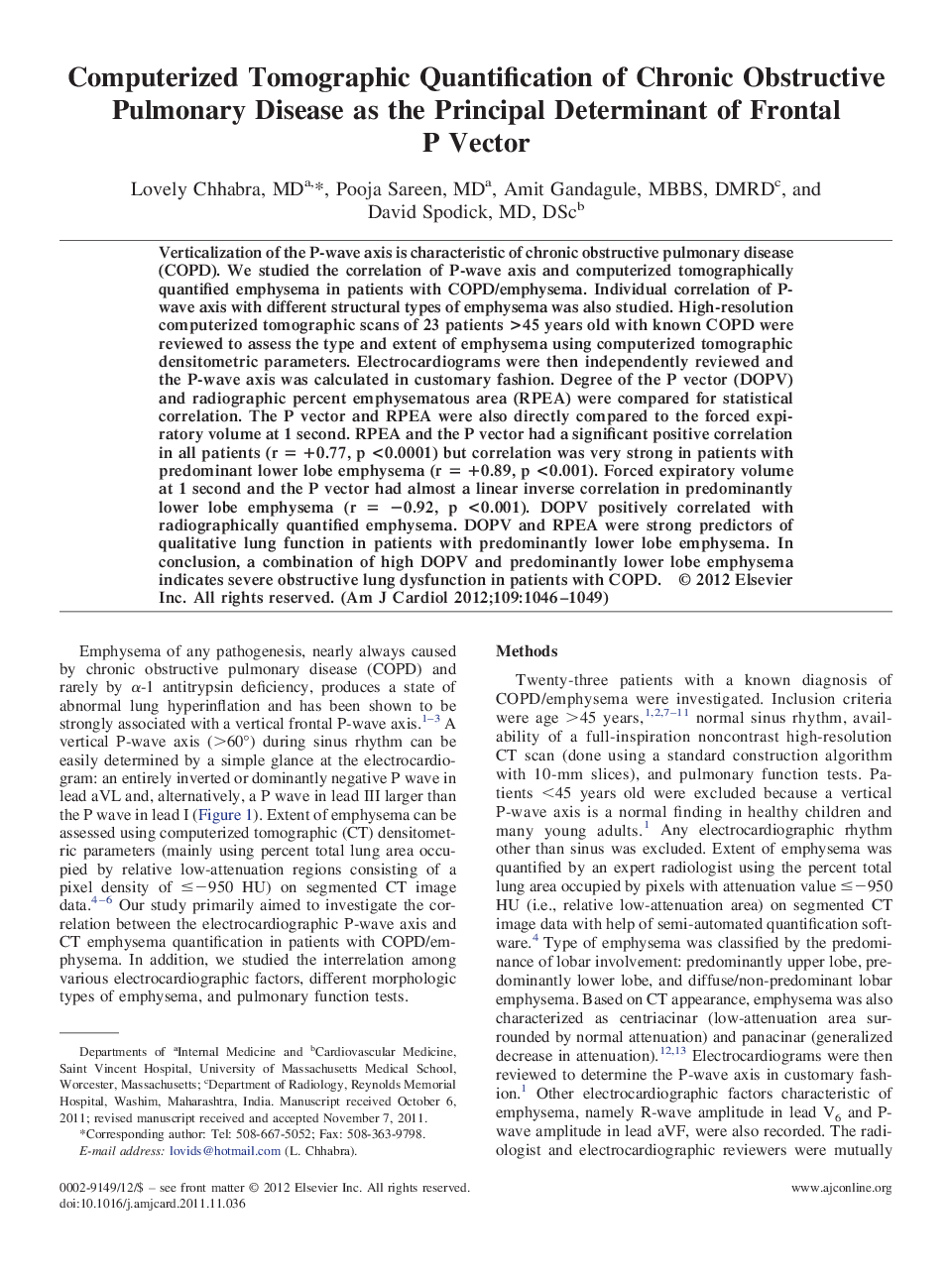| Article ID | Journal | Published Year | Pages | File Type |
|---|---|---|---|---|
| 5931398 | The American Journal of Cardiology | 2012 | 4 Pages |
Abstract
Verticalization of the P-wave axis is characteristic of chronic obstructive pulmonary disease (COPD). We studied the correlation of P-wave axis and computerized tomographically quantified emphysema in patients with COPD/emphysema. Individual correlation of P-wave axis with different structural types of emphysema was also studied. High-resolution computerized tomographic scans of 23 patients >45 years old with known COPD were reviewed to assess the type and extent of emphysema using computerized tomographic densitometric parameters. Electrocardiograms were then independently reviewed and the P-wave axis was calculated in customary fashion. Degree of the P vector (DOPV) and radiographic percent emphysematous area (RPEA) were compared for statistical correlation. The P vector and RPEA were also directly compared to the forced expiratory volume at 1 second. RPEA and the P vector had a significant positive correlation in all patients (r = +0.77, p <0.0001) but correlation was very strong in patients with predominant lower lobe emphysema (r = +0.89, p <0.001). Forced expiratory volume at 1 second and the P vector had almost a linear inverse correlation in predominantly lower lobe emphysema (r = â0.92, p <0.001). DOPV positively correlated with radiographically quantified emphysema. DOPV and RPEA were strong predictors of qualitative lung function in patients with predominantly lower lobe emphysema. In conclusion, a combination of high DOPV and predominantly lower lobe emphysema indicates severe obstructive lung dysfunction in patients with COPD.
Related Topics
Health Sciences
Medicine and Dentistry
Cardiology and Cardiovascular Medicine
Authors
Lovely MD, Pooja MD, Amit MBBS, DMRD, David MD, DSc,
